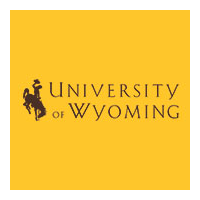
- Find Your College
- Scholarships
- Pay for College
-
Articles
- COLLEGES
- Most Recent
- Affordability & Cost
- College Search
- Comparisons
- College Majors & Minors
- Myths
- News & Trends
- Tips, Tools & Advice
- Admissions
- Most Recent
- ACT & SAT
- College Admissions
- College Applications
- Myths
- Online Colleges
- Questions & Answers
- About
- Home
- >
- Browse All Majors
- >
- Biological And Biomedical Sciences
- >
- Zoology/Animal Biology
- >
- Wildlife Biology
Wildlife Biology
Select Type of Degree:
Select State:
|
#1

SUNY College of Environmental Science and Forestry
|
|||||||||||
|
#2

Lees-McRae College
|
|||||||||||
|
#3

Colorado State University-Fort Collins
|
|||||||||||
|
#4

University of Vermont
|
|||||||||||
|
#5

Texas State University
|
|||||||||||
|
#6

University of Wyoming
|
|||||||||||
|
#7

Keystone College
|
|||||||||||
|
#8

Friends University
|
|||||||||||
|
#9

Ohio University-Main Campus
|
|||||||||||
|
#10

Brigham Young University
|
|||||||||||
|
*The estimated net prices above are College Raptor’s estimate. Please contact the college financial aid office for actual net cost figures.
|
|||||||||||
| Institution | Scaled Score | Acceptance Rate | Annual Degrees Awarded | SAT Score | Est. Net Price * | Median Starting Salary | Save | |
|---|---|---|---|---|---|---|---|---|
 SUNY College of Environmental Science and Forestry Syracuse, NY At SUNY College of Environmental Science and Forestry, the most popular...view more | 100 | 83% | 33 | 1,150 - 1,330 | $19,644 | $53,242 | ||
 Lees-McRae College Banner Elk, NC Each year, Lees-McRae College awards around 47 degrees to students majoring...view more | 98 | 81% | 47 | 1,040 - 1,240 | $26,009 | $52,925 | ||
 Colorado State University-Fort Collins Fort Collins, CO Annually, Colorado State University-Fort Collins grants about 677 degrees to...view more | 84 | 90% | 113 | 1,100 - 1,310 | $19,828 | $52,686 | ||
 University of Vermont Burlington, VT Annually, the University of Vermont awards about 195 degrees to those...view more | 81 | 60% | 42 | 1,280 - 1,430 | $22,062 | $56,364 | ||
 Texas State University San Marcos, TX Each year, Texas State University awards around 502 degrees to those studying...view more | 73 | 89% | 57 | 990 - 1,200 | $15,307 | $50,778 | ||
 University of Wyoming Laramie, WY Each year, the University of Wyoming awards around 158 degrees to students...view more | 71 | 97% | 47 | 1,070 - 1,290 | $13,299 | $51,366 | ||
 Keystone College La Plume, PA Every year, Keystone College grants about 27 degrees to students studying...view more | 61 | 80% | 13 | 910 - 1,130 | $21,461 | $52,334 | ||
 Friends University Wichita, KS Annually, Friends University awards about 38 degrees to students studying...view more | 60 | 56% | 14 | 930 - 1,110 | $22,579 | $51,838 | ||
 Ohio University-Main Campus Athens, OH Each year, Ohio University-Main Campus grants around 1396 degrees to students...view more | 56 | 85% | 27 | 1,110 - 1,310 | $20,550 | $52,406 | ||
 Brigham Young University Provo, UT At Brigham Young University, the three most popular college majors students...view more | 56 | 69% | 25 | 1,310 - 1,440 | $14,643 | $48,721 |
*The estimated net prices above are College Raptor’s estimate. Please contact the college financial aid office for actual net cost figures.
About Wildlife Biology
A program that focuses on the application of biological principles to the study of vertebrate wildlife, wildlife habitats, and related ecosystems in remote and urban areas. Includes instruction in animal ecology; adaptational biology; urban ecosystems; natural and artificial habitat management; limnology; wildlife pathology; and vertebrate zoological specializations such as mammalogy, herpetology, ichthyology, ornithology, and others.
Colorado grants the most Bachelors degrees in Wildlife Biology of all US states with 113 degrees being awarded last year. Students wanting to major in Wildlife Biology can expect about 39% percent of their fellow classmates to be men and 61% percent to be women. Most students graduating in this field earn a Bachelors degree. The average starting salary for a graduate with a bachelor's degree in Wildlife Biology is $35,600.
Careers
For Wildlife Biology majors, some of the most in demand careers include Biological Technicians, Zoologists and Wildlife Biologists . Not only that, Wildlife Biology graduates may land a high salary job, such as Zoologists and Wildlife Biologists or Biological Technicians.
Top Paying Careers
These are the highest paying careers for Wildlife Biology majors.
| Career | Median Salary | Average Annual Job Openings | Employment 2022 | Employment 2032 | % Change | |
|---|---|---|---|---|---|---|
| Zoologists and Wildlife Biologists | $70,600 | 718 | 9,148 | 9,436 | 3% | |
| Biological Technicians | $51,430 | 3,879 | 29,792 | 31,219 | 5% |
Most In-Demand Careers
These are the careers in highest demand for Wildlife Biology majors.
Student Demographics




Subscribe to Our Newsletter
Join thousands of students and parents learning about finding the right college, admissions secrets, scholarships, financial aid, and more.

College Raptor, Raptor, InsightFA, FinanceFirst, and “The Right College. The Best Price.” are registered trademarks of College Raptor, Inc.


